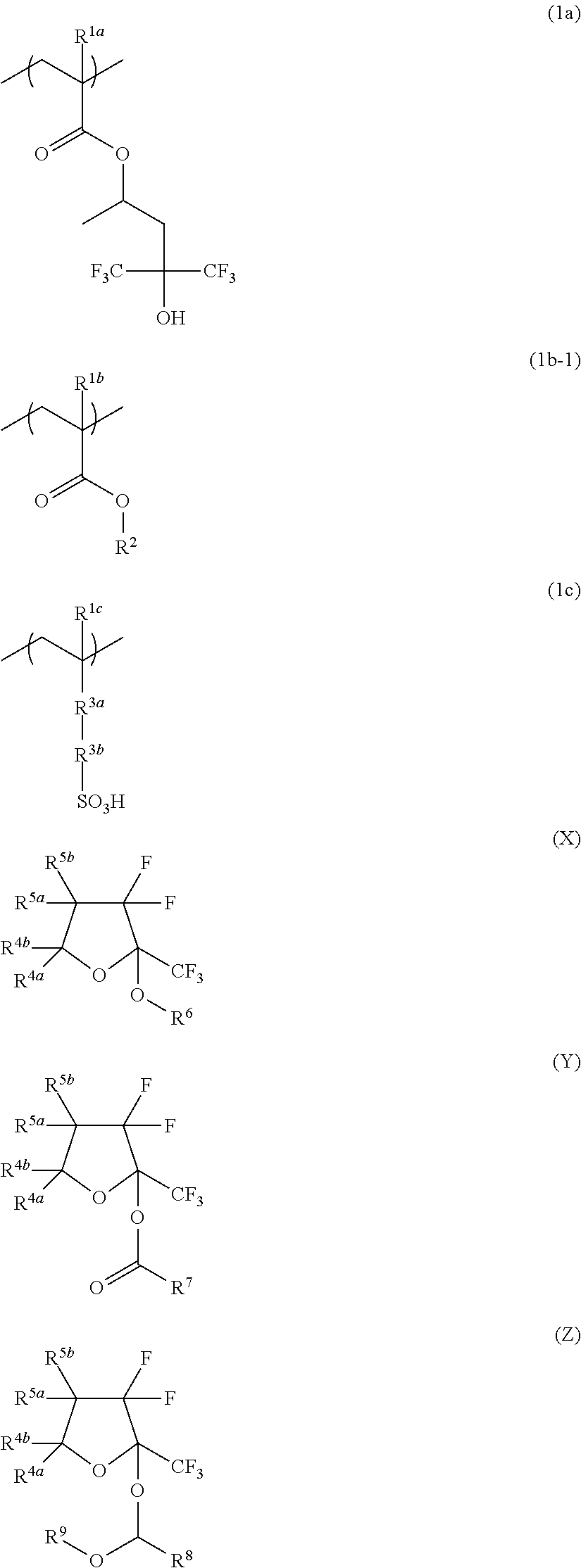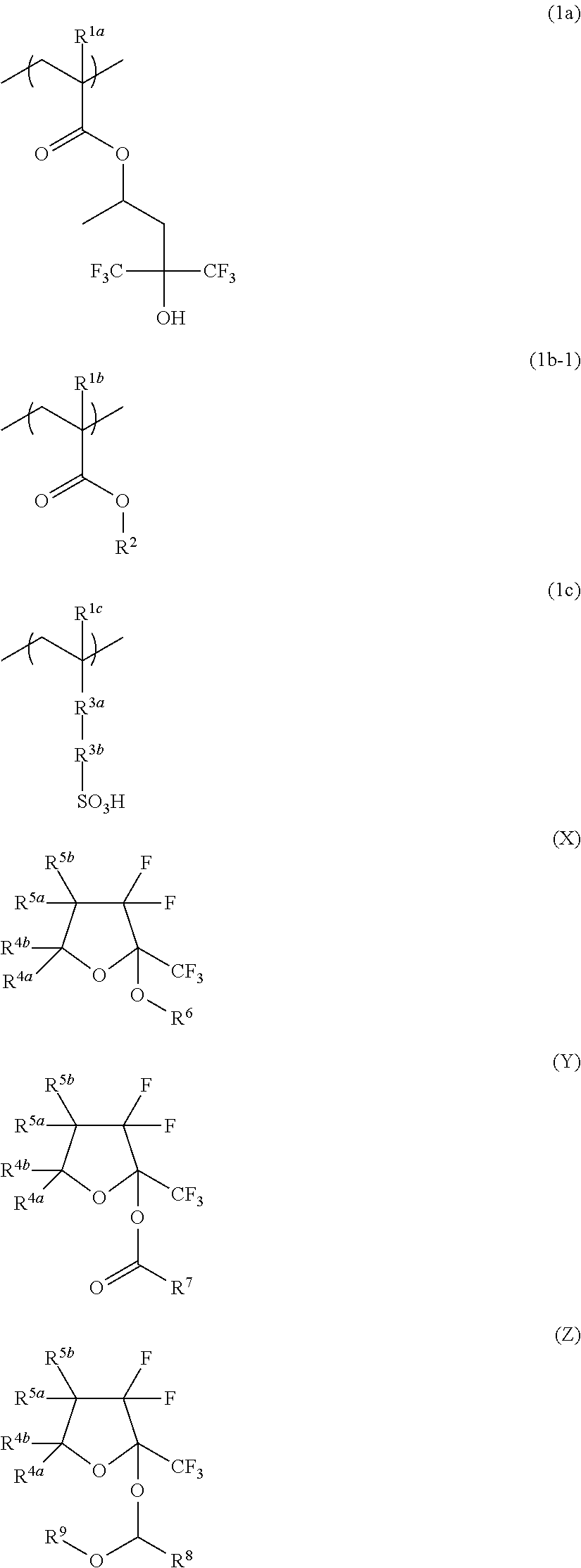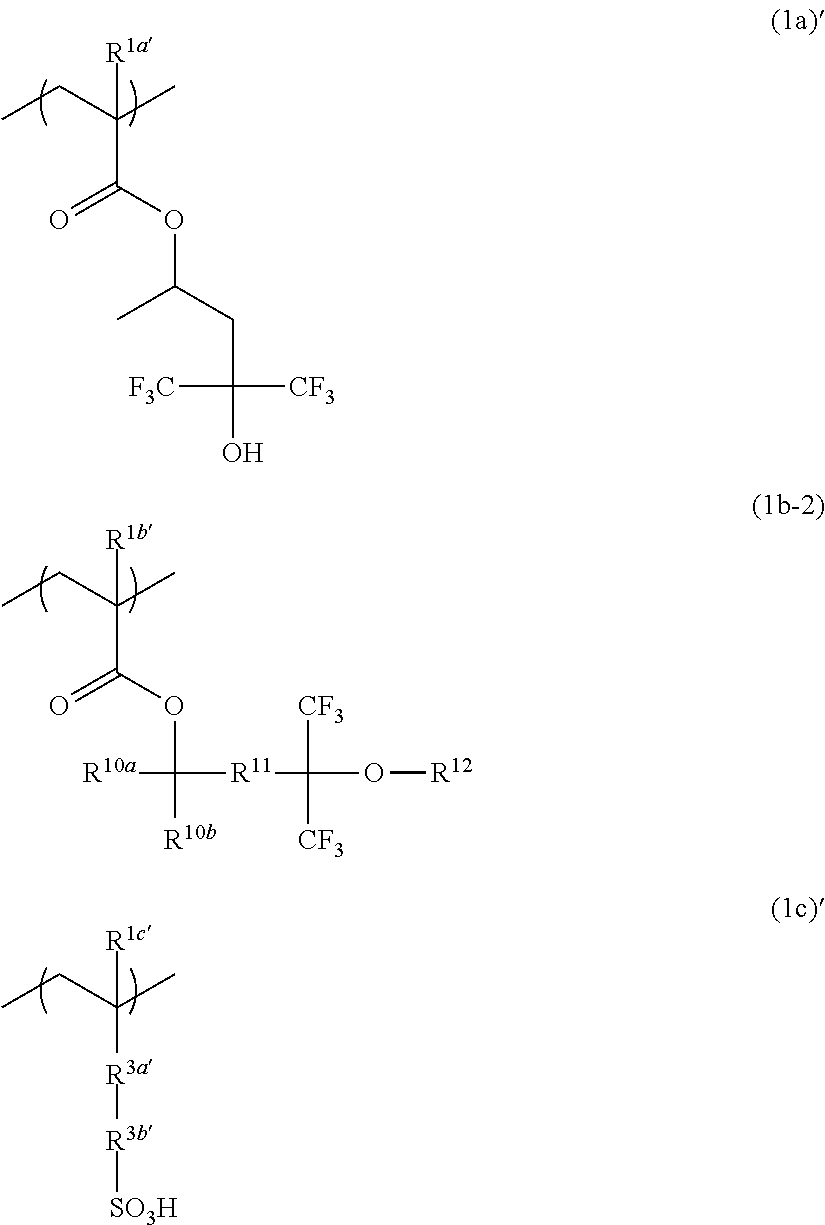Resist top coat composition and patterning process
a composition and top coat technology, applied in the field of resist top coat composition and patterning process, can solve the problems of pattern deformation and collapsing, defect by water droplets, possibility of inducing defects, etc., and achieve the effects of improving stability in vacuum equipment after exposure, excellent transparency, and convenient availability
- Summary
- Abstract
- Description
- Claims
- Application Information
AI Technical Summary
Benefits of technology
Problems solved by technology
Method used
Image
Examples
polymer synthesis example 13
Copolymerization of Monomer 11 and Monomer 8 (90 / 10) in the Co-Presence of Base 1
[0162]Into a flask under a nitrogen atmosphere, 96.46 g of Monomer 11, 4.03 g of Monomer 8, 1.87 g of Base 1 (se the following formula), 4.18 g of dimethyl 2,2-azobis(isobutyric acid), and 155.56 g of 2-propanol were added to prepare a monomer solution with the solution temperature of 20 to 25° C. Into another flask under a nitrogen atmosphere, 77.78 g of 2-propanol was added, and then heated to 80° C. with stirring; thereafter, into it, the foregoing monomer solution was added drop-wise over 4 hours. After completion of the addition, the resulting polymerization solution was stirred for 2 hours with maintaining the temperature at 80° C., and then cooled to room temperature after completion of aging. The obtained polymerization solution was added with 300 g of 2-propanol, and then washed with 300 g of ultra-highly purified water for 3 times. An organic layer was extracted, concentrated to total mass of ...
polymer synthesis example 1
Comparative Polymer Synthesis Example 1
Copolymerization of Monomer 1 and Monomer 8 (95 / 5)
[0163]Monomer 1 and Monomer 8 were charged with the mol ratio of 95 / 5, and then Comparative Polymer 1 was synthesized by a similar manner to those in the synthesis of Polymer 1. Composition of the resin was analyzed by 1H-NMR, showing that composition ratio of Monomer 1 and Monomer 8 be 96.8 / 3.2% by mol. A weight-average molecular weight (Mw) obtained by GPC was 7,100 (Mw / Mn=1.44).
polymer synthesis example 2
Comparative Polymer Synthesis Example 2
Synthesis of Homopolymer of Monomer 11
[0164]Into a flask under a nitrogen atmosphere, 100.0 g of Monomer 11, 3.91 g of dimethyl 2,2′-azobis(isobutyric acid), and 100.0 g of 2-propanol were added to prepare a monomer solution with the solution temperature of 20 to 25° C. Into another flask under a nitrogen atmosphere, 50.0 g of 2-propanol was added, and then heated to 80° C. with stirring; thereafter, into it, the foregoing monomer solution was added drop-wise over 4 hours. After completion of the addition, the resulting polymerization solution was stirred for 3 hours with maintaining the temperature at 80° C., and then cooled to room temperature after completion of aging. The obtained polymerization solution was added drop-wise into 2,000 g of water, and then precipitated homopolymer was separated by filtration. The obtained homopolymer was washed with 600 g of hexane / isopropyl ether (9 / 1) for 4 times to separate a white solid substance, which ...
PUM
| Property | Measurement | Unit |
|---|---|---|
| wavelength | aaaaa | aaaaa |
| wavelength | aaaaa | aaaaa |
| wavelength | aaaaa | aaaaa |
Abstract
Description
Claims
Application Information
 Login to View More
Login to View More - R&D
- Intellectual Property
- Life Sciences
- Materials
- Tech Scout
- Unparalleled Data Quality
- Higher Quality Content
- 60% Fewer Hallucinations
Browse by: Latest US Patents, China's latest patents, Technical Efficacy Thesaurus, Application Domain, Technology Topic, Popular Technical Reports.
© 2025 PatSnap. All rights reserved.Legal|Privacy policy|Modern Slavery Act Transparency Statement|Sitemap|About US| Contact US: help@patsnap.com



